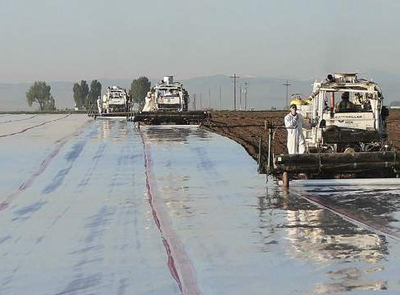Planting resistant crop varieties has historically been one of the most effective control measures for many plant diseases. However, there are currently no russet varieties with resistance to potato cyst nematodes. One major goal of the GLOBAL project is to develop such new varieties. The fumigant methyl bromide has also been used extensively for the eradication of cyst nematodes and other soilborne plant pathogens. However, use of this chemical has been increasingly restricted. Other nematode control measures, including the use of non-host trap crops, microbial biocontrol agents, and plant products that contain naturally-produced nematicidal compounds, are promising control approaches.

